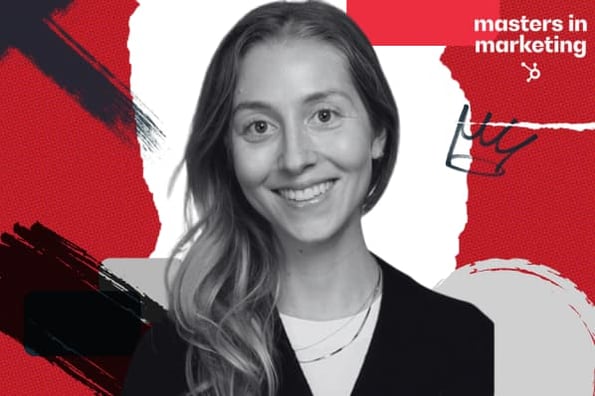Physical Address
304 North Cardinal St.
Dorchester Center, MA 02124
Physical Address
304 North Cardinal St.
Dorchester Center, MA 02124

The SEO landscape has been a rollercoaster lately, and many marketers and SEO experts are doing their best to keep up. However, HubSpot’s senior director of global growth, Aja Frost, remains optimistic about the future of SEO as new competitors enter the arena.

“In fact, I think the arrival of new competitors is one of the most exciting developments of the last two years,” she says. “For so long we’ve all been just Google oriented and reverse engineering the Google algorithm in many ways that stifled innovation in content marketing and SEO.”

If you’re not sure how to change your approach to keep up with SEO marketing, I’ve got you covered with Aja Frost’s five tips for navigating the future of SEO.
I’ve said this so many times in previous blog posts, and you might be sick of hearing it, but I promise it’s true—marketers need to see AI as a tool or marketing best friend, not a replacement. And Aja agrees.
“AI tools are great at researching, organizing ideas, outlining and providing the foundation for great content,” she says. And it’s not just about written content like blog posts or emails; AI can also lay the foundation for superior videos and images.
But here’s why I can’t replace you, according to Aja.
“AI tools aren’t as strong as humans in actually developing the content itself,” she says, “like taking an idea or concept from good to great and turning it into a full post or taking that proof of concept for a micro app.”
And that, says Aja, is where you, the human marketer, have to paint the lines and create content that will pop. Think of it as if you were Batman and the AI was your Robin.
Google’s algorithm was … tricky … to say the least. However, one thing has been consistent through all his changes: his penchant for unique, expert-driven content that only humans can create.
So when you’re creating content that you hope Google will pick up and pass on to users, consider moving beyond typical clinical information and thinking creatively.
“Separate your content from basic types of information and look for deeper, more nuanced and complex questions that require human expertise,” says Aja.
You might be thinking, “But does expert-driven content even matter in a world where people can just ask ChatGPT? Doesn’t that make SEO useless?” Well no!
Aja explains: “I don’t believe that 90% of queries will be on AI search engines. Searcher behavior is entrenched and there are many jobs to be done and tasks still required by traditional web searches.”
Aja recalls when the SEO industry was in a frenzy over predictions that up to 50% of queries would be handled by voice assistants like Amazon’s Alexa.
“Now, the only thing I ask my Alexa to do is the time and set a timer, so I definitely wouldn’t write off traditional searches,” she says.
As I said earlier, expert-driven content is essential for SEO-optimized content. But what should it look like? Do you just write that you are an expert in your blog post and hope for the best? No, according to Aja.
“Using first person doesn’t automatically mean expertise,” she says. “It is necessary to explain why the author is in a unique position to give advice.”
For example, whenever I write about topics with which I have personal experience, I support my expertise with the following:
So, once you’ve established yourself as an expert on your content, find ways to highlight your expertise. Show, don’t just talk.
Like many SEOs and content marketers, you may notice some steep drops in organic traffic as the SEO landscape changes. Trust me when I say we’ve been there. Fortunately, Aja says that diversifying your portfolio can solve the problem.
“Look for more defensible sources of demand,” she says. “For HubSpot, it’s YouTube and micro apps, but it could be Substack for another company.”
Aja also says that doubling down on working with creators could benefit your audience.
“It’s about saying, ‘If Google is really changing, where else are we investing?'” she says.
Don’t rush to write off a supposedly “dead” channel when diversifying your strategy.
“What bothers me is when people say any channel is dead,” says Aja. “Search is not dead, and neither are podcasts or any other channels. You can make any channel work really well if you understand your persona.”
